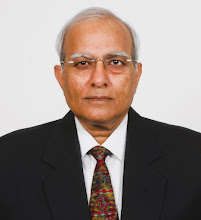ENDING THE MENACE OF VOTE BANK POLITICS: A CALL TO ACTION FOR DEMOCRATIC INTEGRITY
Vote bank
politics is eroding the moral and constitutional fabric of the nation
The use of
religion, caste, region, and freebies to court electoral favour undermines the
essence of fair representation. If not addressed promptly, these tactics may
take the country further down a dangerous path.
It’s time
for bold and thoughtful reforms—before the consequences become irreversible.
A Unified
Plea to Constitutional Authorities
We
respectfully appeal to Parliamentarians, the Judiciary, and the Election
Commission of India to come together and design a future-ready electoral
framework. This framework must be resilient against divisive tactics and
guided by the values enshrined in the Constitution.
At the same
time, it is essential to acknowledge a growing challenge: the increasing
presence of individuals in public office who may not be adequately equipped, educationally
or ethically, for the sacred responsibility of nation-building. Many enter the
system propelled not by public service, but by personal ambition and social
influence. While each citizen deserves the right to contest elections, the
integrity of Parliament must not be compromised.
This dilemma
calls for a structural solution, not a personal indictment.
Reinforcing
Democratic Safeguards
Democracy
cannot be allowed to decentralise into a stage for unchecked populism or
manipulation. Anyone who deliberately incites public sentiment, issues mass
dictates, or exploits identity-based fault lines must face lifetime
disqualification from public office. Such actions should be met with strong
legal consequences, including charges of sedition and rigorous imprisonment.
The system
should favour leaders of character, not merely those with charisma, capital, or
connections.
Candidate
Evaluation: Raising the Bar
The Election
Commission may consider implementing an eligibility and aptitude assessment
for prospective parliamentarians. Suggested topics could include:
- Understanding the Constitution and its democratic ethos
- Awareness of Social Equality and Human Rights
- Knowledge of the Uniform Civil Code and Secularism
- Concept of Nationalism and National Unity
- Fundamentals of Law & Order and Rule of Law
- Egoless Public Service and Respectful Conduct
- Cognitive and Emotional Fitness for Leadership
Minimum
Preconditions for Contesting Elections
·
Educational Qualification: Minimum
graduation from a recognized institution
· Transparent Financial Vetting: Candidates’
wealth declarations must be vetted by the Income Tax and Enforcement Directorate
to prevent misuse of black or ill-gotten money
· Accountability Clause: Any proven
falsification or misrepresentation should result in immediate removal from
all public positions, including elected seats
For the
Nation, It’s Time to Stand Firm
Democracy
thrives not by allowing anyone to rule, but by empowering those willing to
serve. A nation’s strength is measured by the character of its leaders,
and systems must evolve to reflect this truth.
Let us work together to build a robust, fair, and principled democratic
structure, one that rewards integrity, not opportunism.












